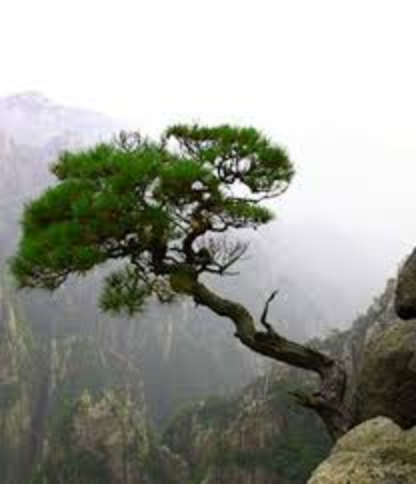
What Does Pine Symbolize in China?
Pine (song 松) is one of the most popular designs in Chinese decorative art. Because it is an evergreen tree, it is a common symbol of longevity, symbolizing endurance and steadfastness.
Pine, Bamboo, and Plum
Pine is one of the "Three Friends of Winter," along with bamboo and plum blossoms. These three plants represent perseverance, integrity, and resilience. They are often depicted together in art and literature as symbols of these virtues.
| Plant | Symbolic Meaning | | :------------ | :---------------------------------------------------- | | Pine | Longevity, steadfastness, endurance | | Bamboo | Integrity, flexibility, resilience | | Plum Blossom | Hope, perseverance, beauty in adversity |
These three plants are often depicted together in paintings, calligraphy, and decorative objects, particularly during the winter holidays. Each plant represents different aspects of resilience and perseverance in the face of adversity, and together they form a powerful symbol of hope and endurance.
Pine in Taoism
In Taoism, the pine tree is a symbol of immortality. This is because the pine tree can live for a very long time. Some species of pine can live for thousands of years. The pine is also associated with the Taoist concept of "wu wei," which means "non-action" or "effortless action." The pine is seen as a symbol of naturalness and spontaneity.
The pine tree's ability to thrive in harsh conditions, such as rocky mountain slopes, also makes it a potent symbol of resilience and perseverance in Taoism. Its deep roots and sturdy trunk represent stability and strength, while its evergreen needles signify enduring vitality and a connection to the eternal cycle of life and death.
Pine in Confucianism
In Confucianism, the pine tree is seen as a symbol of the noble person, or "junzi." The junzi is a person who is virtuous, benevolent, and wise. The pine tree is seen as a symbol of these qualities because it is strong, upright, and evergreen.
The pine tree's resilience and longevity also resonate with Confucian values of moral uprightness and enduring legacy. Just as the pine stands tall and unwavering through changing seasons, so too should a virtuous person remain true to their principles and leave behind a lasting impact on the world.
Pine in Art and Literature
The pine tree is a popular subject in Chinese art and literature. It is often depicted in paintings, poems, and stories. In art, the pine tree is often depicted with other auspicious symbols, such as cranes, deer, and mountains. These symbols represent longevity, prosperity, and good fortune.
In literature, the pine tree is often used as a metaphor for strength, resilience, and longevity. For example, the famous Tang dynasty poet Li Bai wrote a poem called "Gazing at a Pine Tree on Mount Jingting," in which he compares the pine tree to a wise old man.
Pine in Modern China
Today, the pine tree remains a popular symbol in China. It is often planted in parks and gardens, and it is also a popular motif in Chinese art and design. The pine tree is a reminder of the importance of strength, resilience, and longevity. It is also a symbol of hope and perseverance.
Pine FAQs
Q: What is the significance of giving someone a pine tree painting as a gift in Chinese culture?
A: Gifting a pine tree painting conveys wishes for the recipient's long life, good health, and enduring fortune. It represents a hope that they will remain resilient and strong like the pine tree, weathering life's challenges with grace and steadfastness.
Q: Are there specific occasions or festivals where pine decorations are particularly popular in China?
A: Pine decorations, often combined with bamboo and plum blossoms, are especially popular during Chinese New Year and the Lunar New Year. They symbolize a fresh start, the promise of good luck, and the enduring spirit that thrives even in the middle of winter.
Q: Why are pine trees often associated with mountains in Chinese art?
A: The pairing of pine trees with mountains in Chinese art speaks to the concepts of longevity, stability, and the enduring power of nature. Mountains, like pine trees, represent enduring strength and are often seen as sacred places where humans can connect with the divine. Depicting them together enhances the symbolic meaning of both, suggesting an enduring connection between the strength of nature and the human spirit.